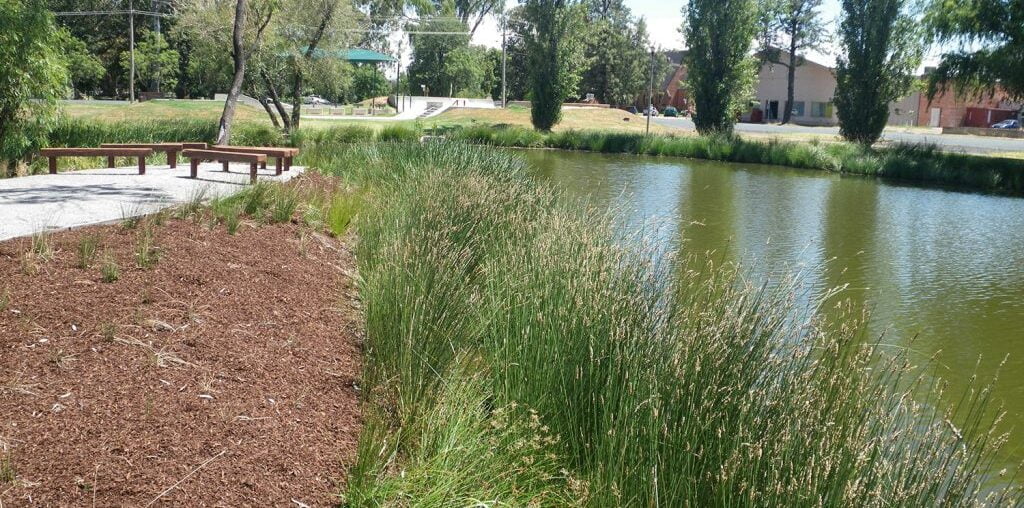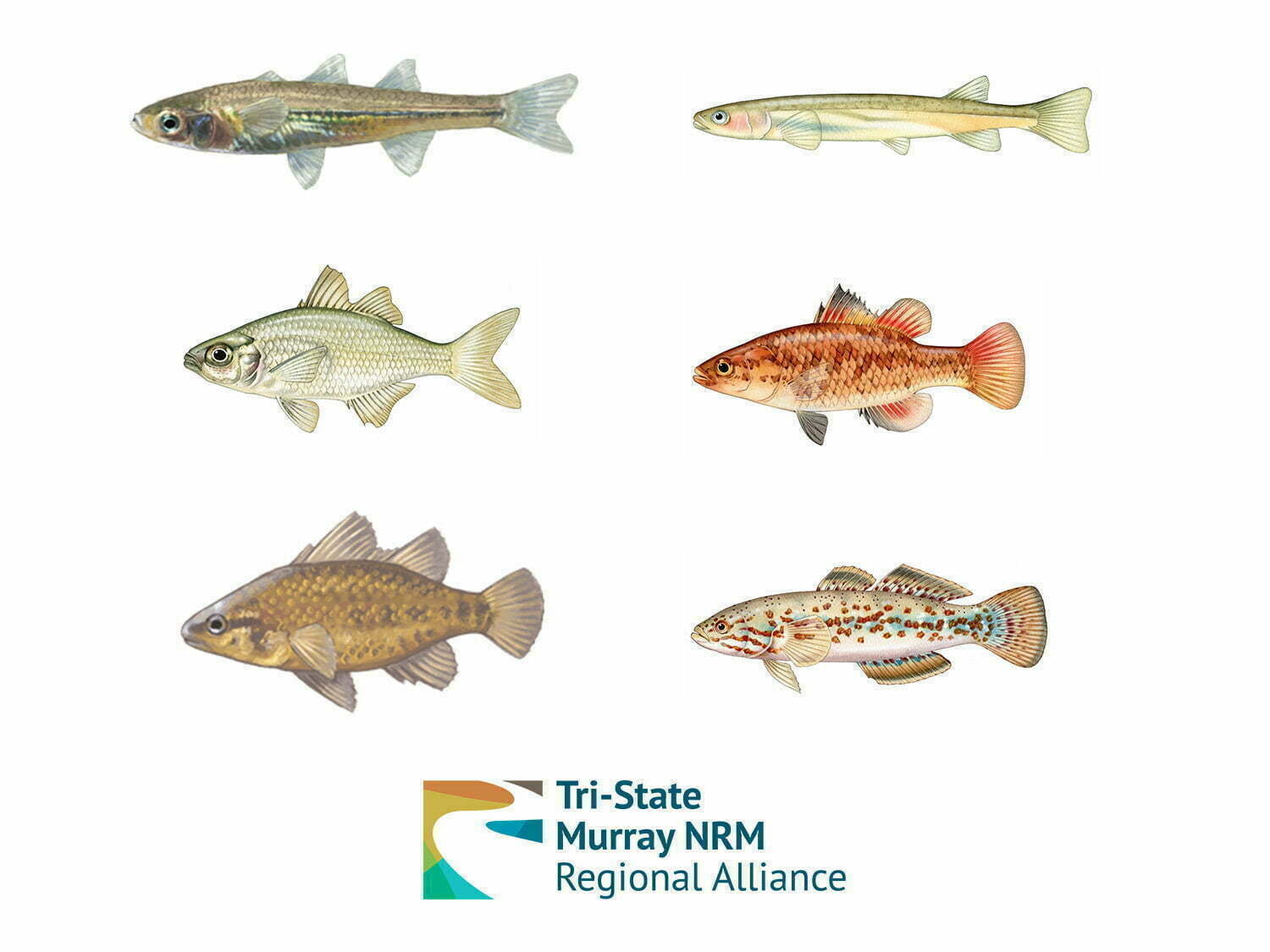The Deniliquin Lagoons project is a community partnership project that has rehabilitated a series of lagoons running through the centre of town. The project started in 2010 and continues today. It has three objectives guiding all activities:
- to support more natural wetland flora and fauna.
- act as an educational area for schools and visitors.
- build community partnerships between different local groups.
These three objectives are guided by the project’s vision of restoring the lagoons so that threatened wetland native fish like the Southern pygmy perch, Southern purple spotted gudgeon, Olive perchlet and Catfish could be released into a supportive habitat, as well as being protected from alien fish. The hope was that these threatened fish could then develop source populations for other restoration sites into the future.
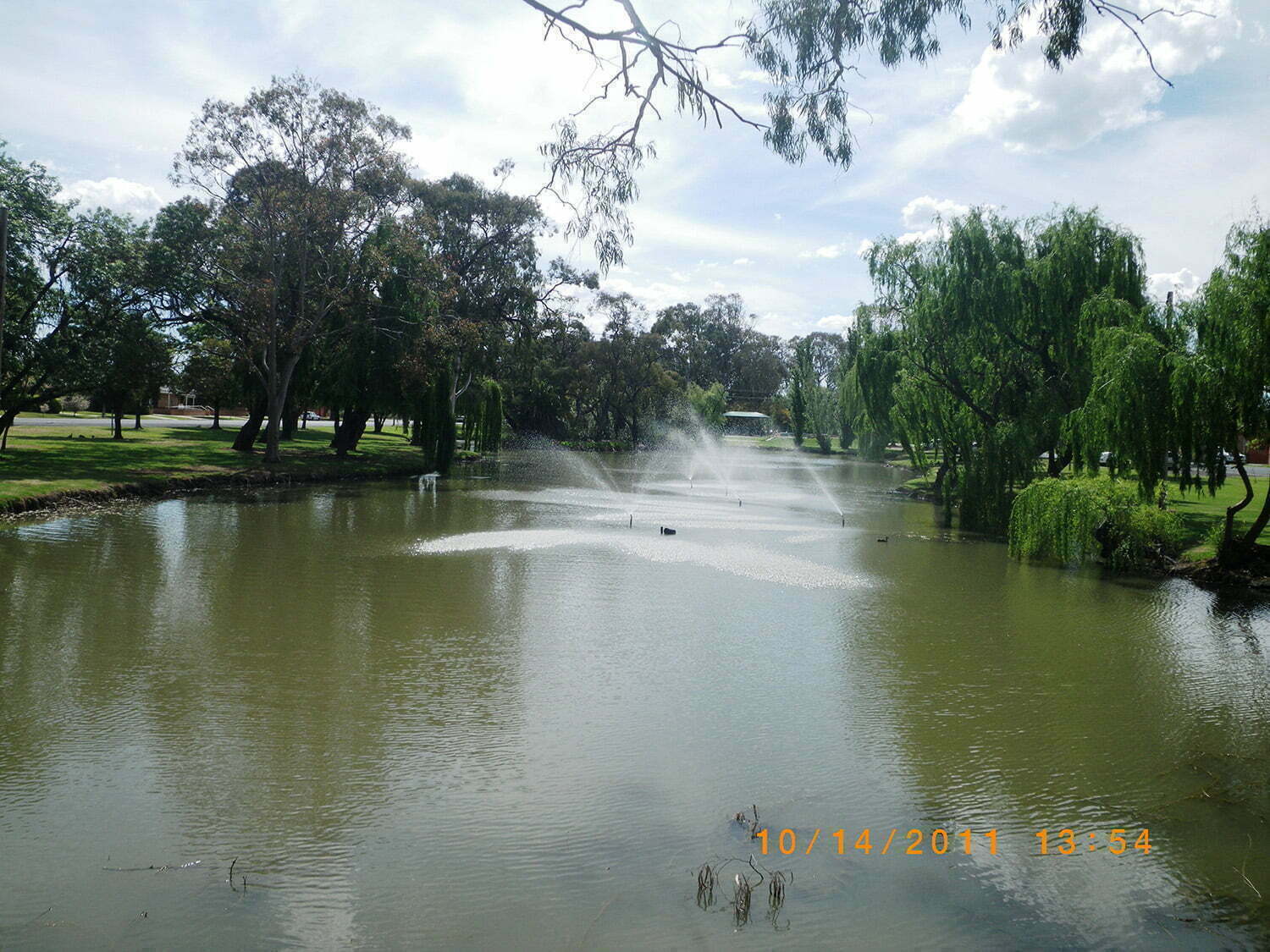
The lagoon’s restoration has taken place over the last 10 years, starting with an initial conversation on the banks of the lagoons back in 2009, to now having four fully restored lagoons, and a recreational fishing park lagoon.
To start the process, all the lagoons were drained and had carp and other pest fish species removed. There were hundreds of carp in the lagoons, of all sizes, and removing them was quite a task
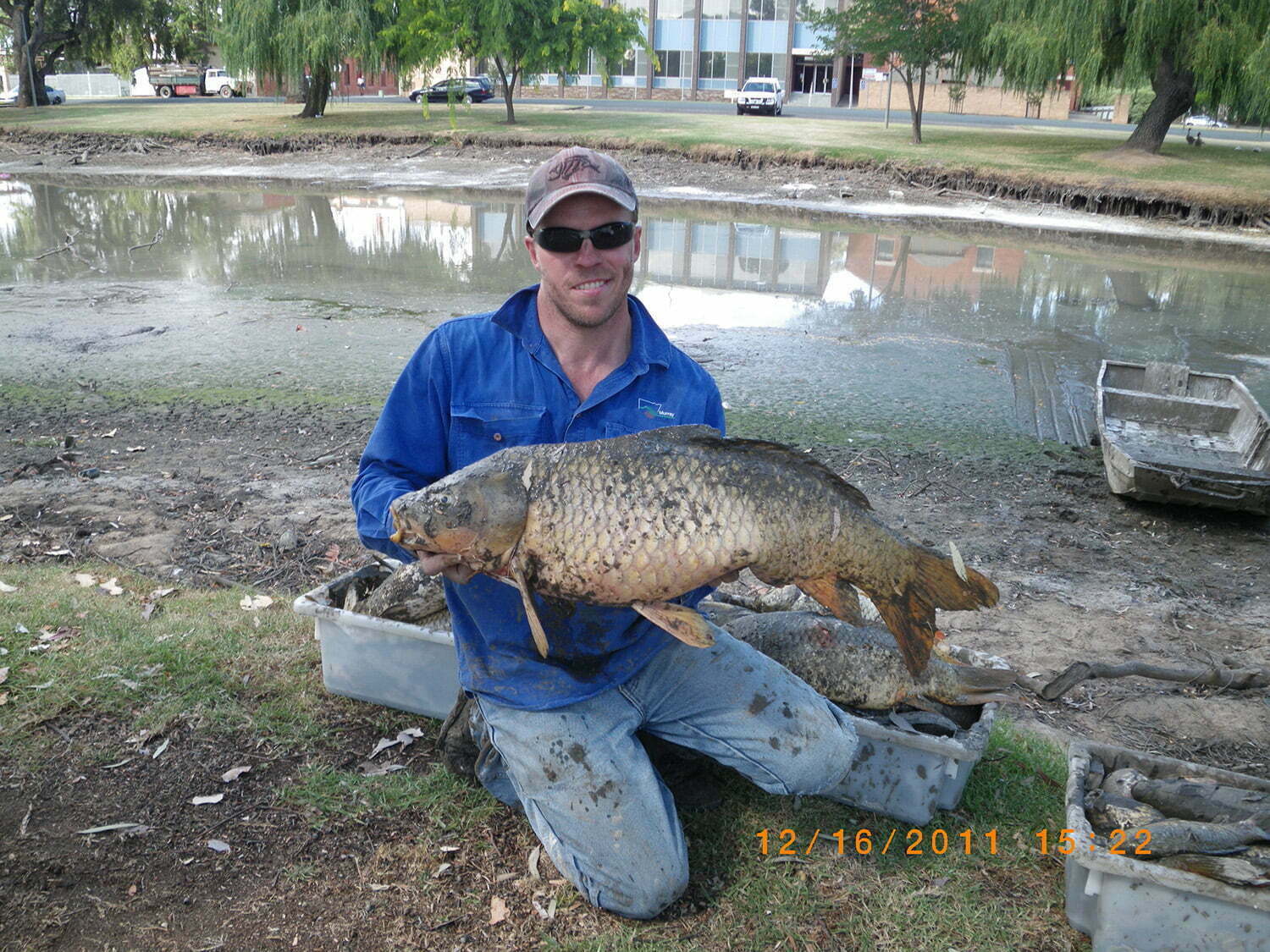
Restoration across all the lagoons has followed a similar process of draining, reshaping the banks, revegetating with wetland plants, and then maintaining works. Different community groups have been involved at all stages, and this has been key to the long running success of the program.
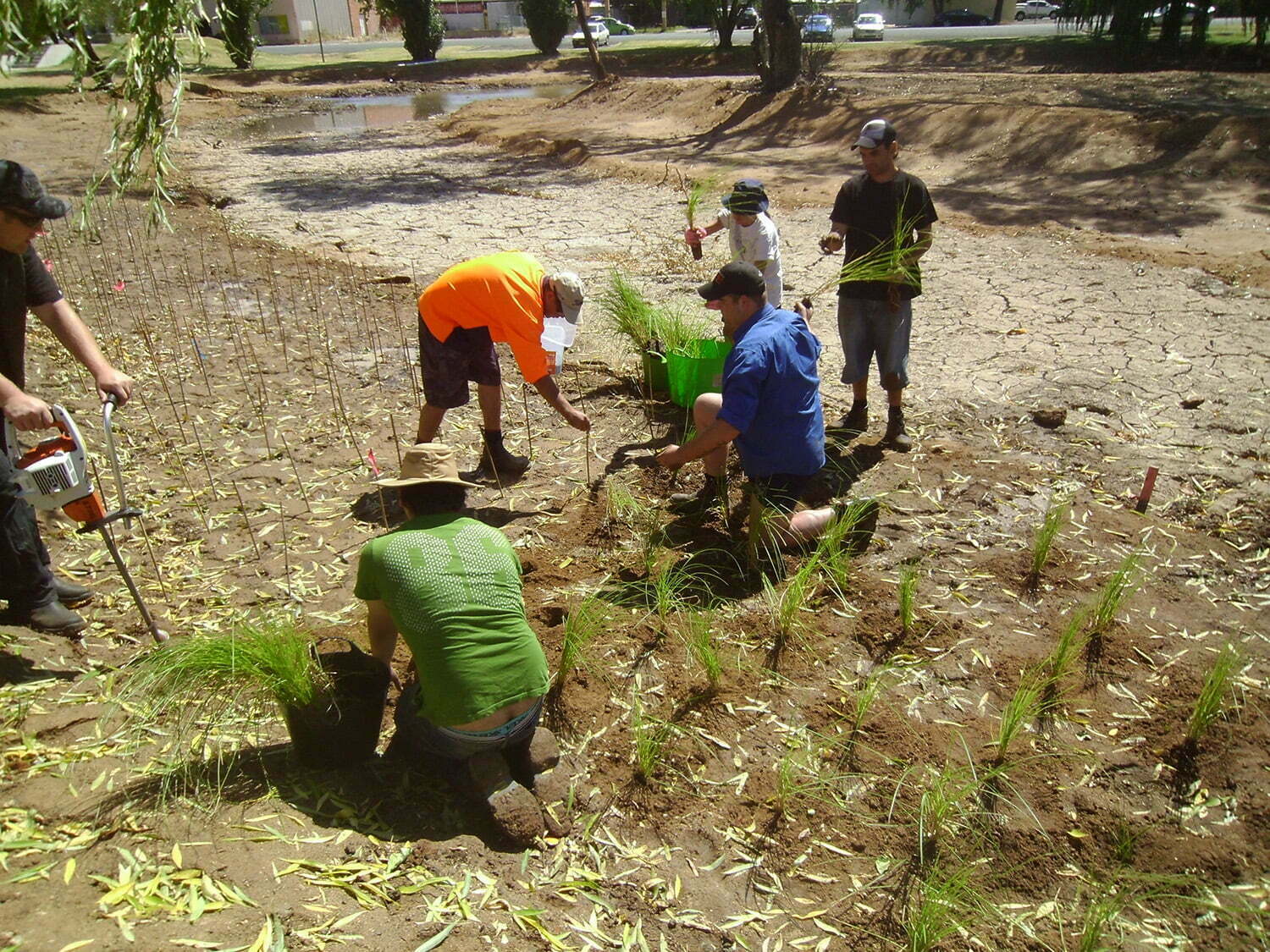
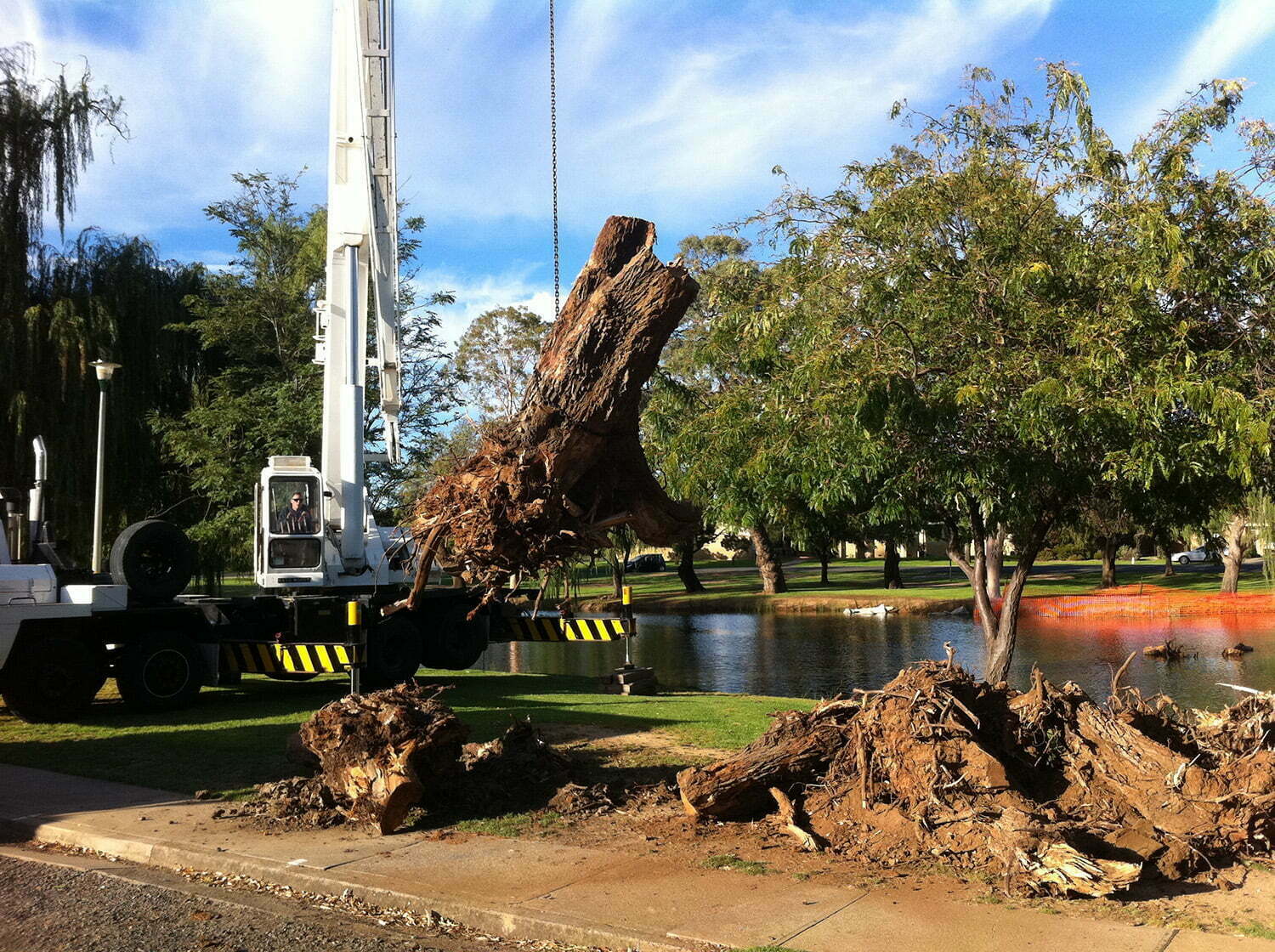
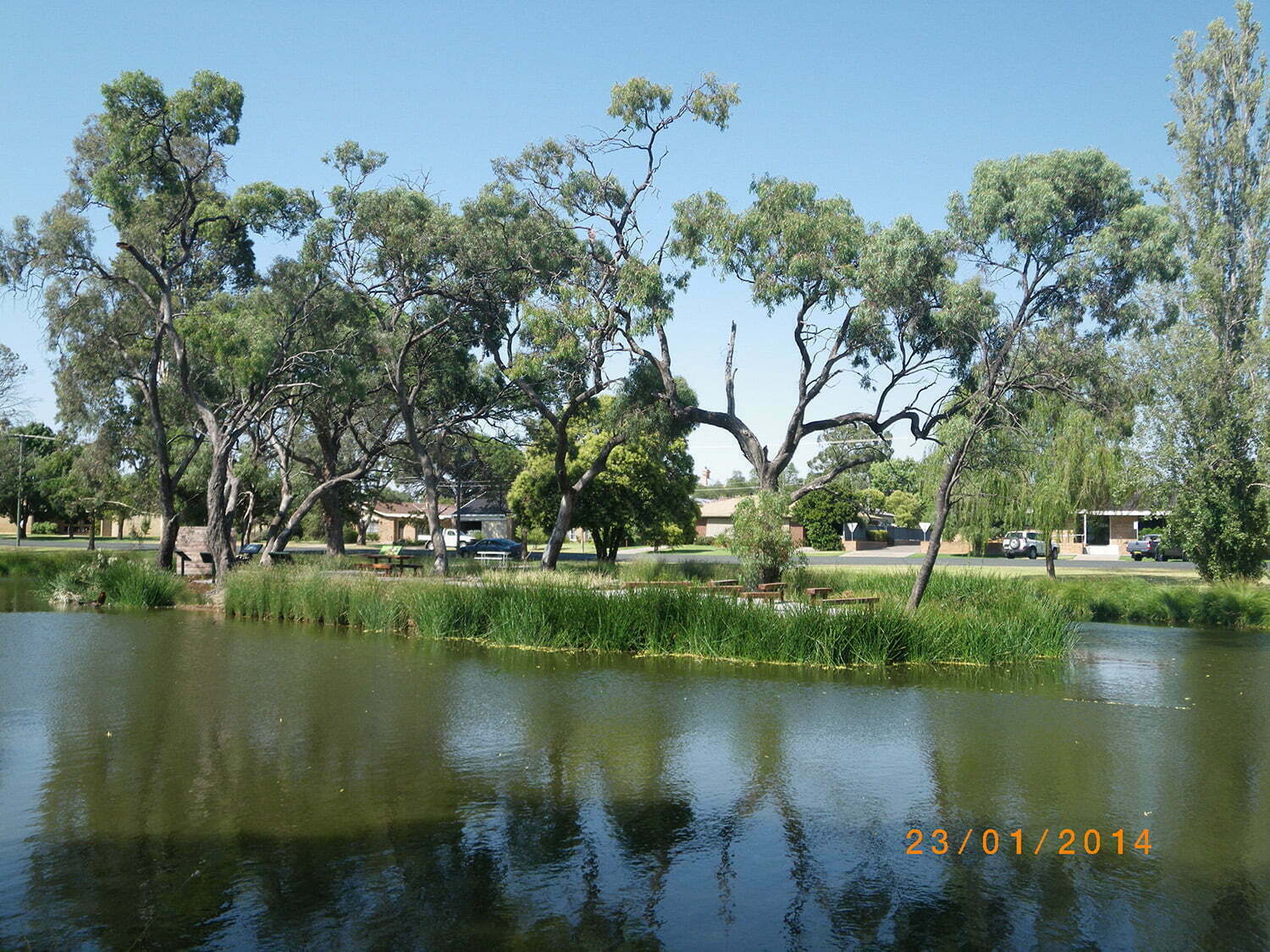
The threatened species project
The Edward-Wakool Angling Association (EWAA) is leading the threatened species component of the lagoons project. Now that key habitat features have been restored, threatened fish species are being relocated into the lagoons from creeks where they are in decline, or from captive bred populations. A partnership approach between EWAA, NSW DPI Fisheries, and Murray LLS has seen the translocation of Catfish from the Barham Lakes, with the objective of establishing a population of breeding Catfish within the lagoons. Adult males have already started to establish nests and the translocation of Catfish will continue into the coming year.

Video of male catfish guarding its nest in the Waring Garden lagoon during breeding season in 2018.
Video credit: Dan Hutton.
Future plans for the lagoons include releasing Southern pygmy perch, Southern purple spotted gudgeon and Olive perchlet. EWAA has raised funds through community donations and are now employing the services of a specialist small-bodied fish breeder to start breeding Southern pygmy perch for release into the lagoons. The fish were sourced from a rescued population of fish from NSW DPI, and will become part of a broader program for recovery of Southern pygmy perch in NSW.
Community involvement and education is a key part of the program and is being accomplished a number of ways including signage along the lagoons, as well as a high school education program. A component of the program is having the students learn about how to breed threatened species such as Purple spotted gudgeons in tanks.

This project has been reliant upon maintaining good working relationships with the local council, State Government and a range of community groups across a wide range of components. It has been great to see what can be achieved when people work together for a common cause.
Story by John Conallin (Charles Sturt University), Troy Bright (Edward-Wakool Angling Association), Josh Campbell (Murray Local Land Services), Luke Pearce (DPI Fisheries) and Dan Hutton (Deni Kolety Lagoons Landcare Group)
